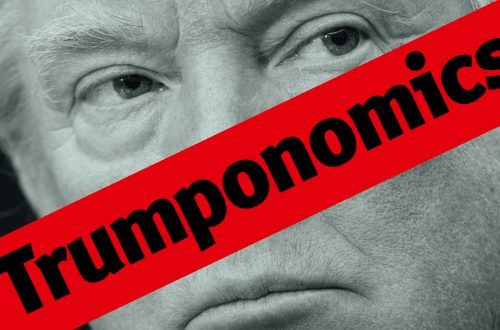In the week that brought us the mathematical equation for the perfect cheese sandwich, I bring you the equation for measuring terrorism.

where terrorjit represents our jth measure of terror for country i in period t, and USit measures political proximity to the United States. Xi,t−1 is the vector of (lagged) control variables, λt are fixed time effects, while εit represents the disturbance.
The equation comes from Does political proximity to the U.S. cause terror? (Economics Letters. Volume 99, Issue 1, April 2008, Pages 27-29) by Axel Drehera and Martin Gassebner.
Here is their hypothesis:
“What worries people around the world above all else is living in a world shaped and dominated by one country — the United States” (Zakaria, 2004). While U.S. dominance seems to alienate people across the globe, most Western countries are still on good terms with the U.S., and so is the majority of their citizens. To the contrary, in some countries with mostly Muslim population, terror groups have emerged, aiming at destroying U.S. culture and dominance. However, not only the U.S. itself became the target of terrorism — its allies have also been hit by severe attacks. Arguably, terror in these countries might also indirectly target U.S. dominance and culture. Friends of the U.S. might thus be more prone to terror than other countries, all else equal.
As one example, consider America’s recent “War on Terror” in Iraq. Following their participation, the UK and Spain – among the closest allies of the U.S. – suffered major terror attacks themselves. These attacks can be linked directly to these countries’ support of the U.S. in Iraq: the two London bombings in July 2005 and the Madrid bombing in March 2004 were declared to be retaliation for participation in the US-led war.
We expect this pattern to hold more generally. Our considerations imply:
Hypothesis
Political proximity to the U.S. increases terror.
Let’s ignore the simplistic notion that terrorists claims of causation should be taken at face value, and look at the results. Using data from Erik Voeten’s UN voting records they attempted to analyse the effect of political proximity to the US on the likelihood of terror attacks. They used data covering the period 1975 to 2001, excluding 2002, since they argued that the effects of September 11th would have made the votes in 2002 unrepresentative of the general pattern. Their results? Voting with the US appears to be related to an additional terror attack if one switches from one extreme (never voting with the US), to the other (always voting with the US).
As can be seen, voting with the U.S. increases the average and the median number of people killed in a single terror attack at the one and, respectively, 5% level of significance. To the contrary, suicide attacks are not more frequent in countries voting in line with the U.S. (a result based on data for 17 countries only, however). According to the estimates, changing voting behaviour from voting fully against to completely in line with the U.S. increases the average number of people killed by 3 and the median by 2.6.
Based on this it they argue alignment with the US is costly.
In summary, our results show that political proximity to the U.S. is costly in terms of additional terror, both regarding frequency and severity of attacks.
There are some problems with this analysis:
- A supposition that voting with the US at the UN is an activity that can be changed. Sometimes the interests of the US coincide with those of other nations. Are nations to choose their stance on a UN vote on the basis of what the US wants, regardless of the administration of the US or the merits of UN motion?
- It is unclear as to why a Neo-nazi attack that killed 3 people in 1992 (Target Turkish), should have any relationship to the German government’s voting record at the UN, or for that matter a Red Brigade attack in Italy. Given the time period covered (1975-2000) the data will exclude modern-day jihadist violence (which is our main contemporary concern) and include incidents that may now be historical issues. The paper does not make it clear enough how the authors controlled for this.
- The effect seems small both in terms of frequency and fatalities. An additional attack if one changes from full opposition to the US at the UN, compared to full agreement? Even the US’s worst enemies won’t approach full opposition, and nor would all of its key allies approach full agreement. At what point should a nation start to worry that their votes with the US are becoming a security risk? The small increase in fatalities (increase of 3 deaths on average) could be as much changed by the effects of random effects of bomb placement, rather than a UN voting record.
You can imagine that the conclusion drawn from the paper could be used for the sort of mindless lap-dog accusations that are commonplace these days, but the nature of the data and the way the hypothesis was framed make this sort paper less than informative about international relations and their effect on terrorism. For example, Denmark’s risk of terrorist attack is likely to be as much influenced by the Mohammad cartoons controversy, than their relationship with the US. You can’t help thinking the authors are not that keen on the US to start with.
Personally, I think you’d find more useful information looking in a cheese sandwich.


